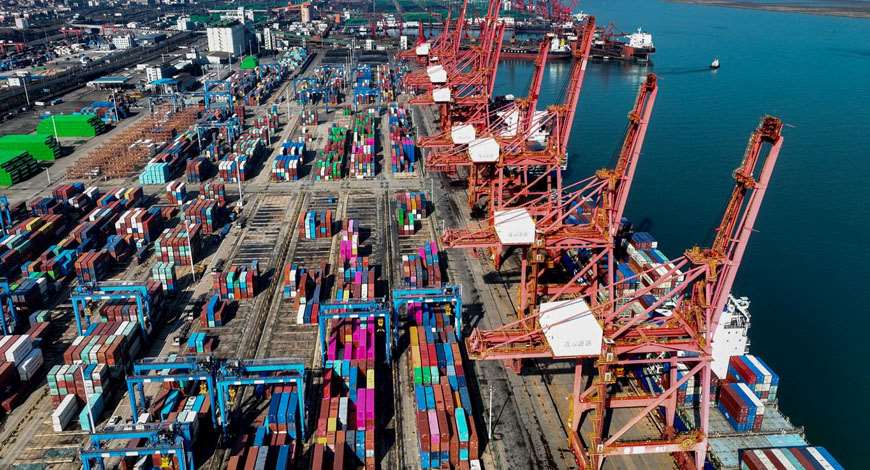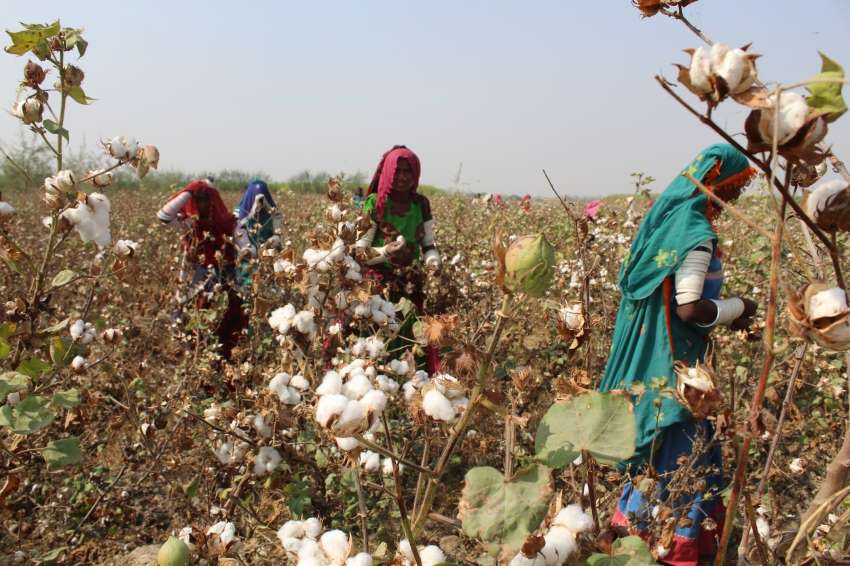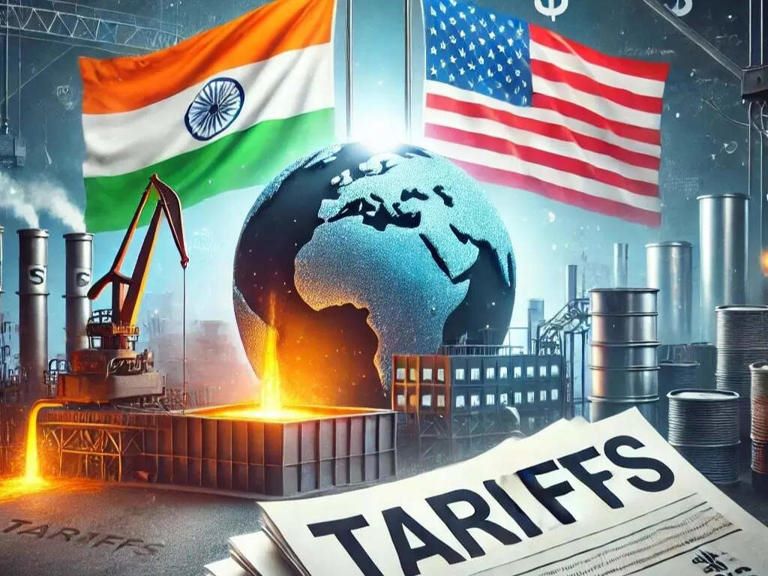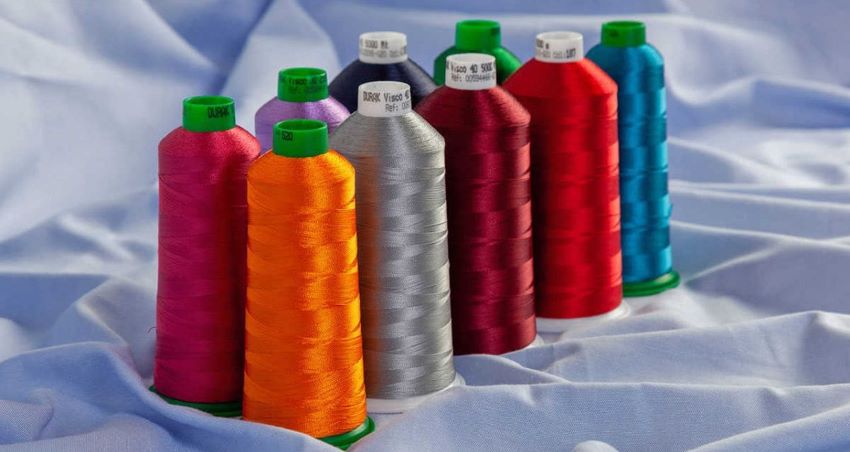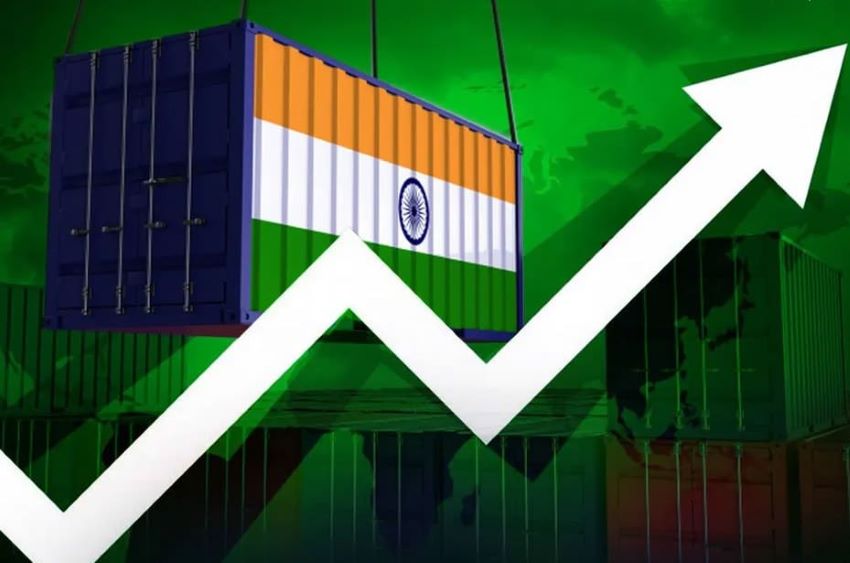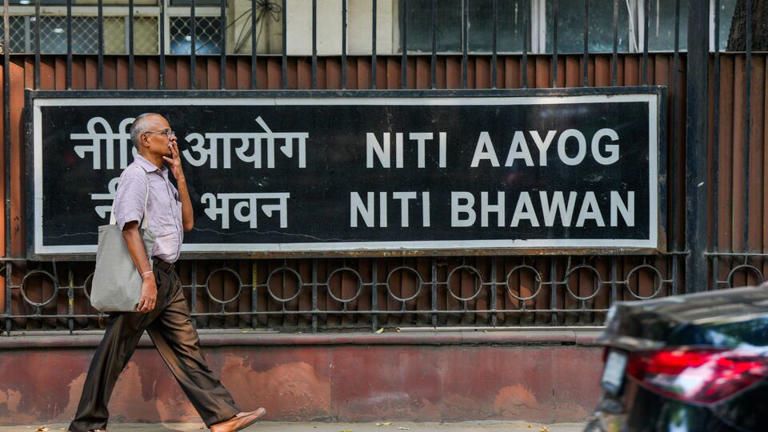FW
The American Association of Textile Chemists and Colorists (AATCC) is accepting nominations for its prestigious annual awards, recognizing outstanding contributions to textile science, education, service, and leadership. The deadline for nominations is March 31, 2025.
The Olney Medal, established in 1944, honors excellence in textile or polymer chemistry. The Chapin Award, created in 1958, acknowledges senior members with 20 or more years of dedicated service to AATCC. Both awards will be presented at the Fabricating the Future Conference, October 5-7, 2025.
Other awards will be presented during the Fall Research Committee Meetings, November 11-15, 2025. These include the AATCC Technical Committee on Research (TCR) Service Award, which recognizes outstanding technical contributions from senior members with at least five years of continuous membership. The Future Leaders Award highlights promising young professionals under 40 who demonstrate strong leadership skills in textiles and material sciences.
The AATCC Education Award honors members making significant contributions to the Association’s educational initiatives, while the Faculty Advisor Award celebrates faculty advisors fostering active and growing AATCC student chapters. The Millson Award for Invention, named after Henry E Millson, recognizes innovative inventions in the textile field.
AATCC encourages members to nominate deserving colleagues, mentors, or proteges who have advanced textile innovation, research, and education. These awards not only recognize individual excellence but also strengthen AATCC’s mission to promote textile science worldwide.

A recent report by CITI by Manoj Sharma, reveals a concerning trend for Indian yarn manufacturers: a significant price disparity between domestic and international prices for key raw materials, PSF (Polyester Staple Fiber) and VSF (Viscose Staple Fiber). The data, compiled for February 2025, highlights a potential challenge to the competitiveness of Indian textiles in the global market. The report, ‘Domestic and International Weekly Price Comparison of PSF and VSF for Month of February 2025’, focuses on the cost competitiveness of Indian yarn manufacturers vis-à-vis their Chinese counterparts, utilizing data from the China Chemical Fibre (CCF).
Study highlights
Significant price difference: The report shows a consistent price difference between domestic prices for MSME (Micro, Small, and Medium Enterprises) spinners and international (CCF) prices, ranging from 14 per cent to 35 per cent across PSF and VSF.
PSF price gap widens: The price difference for PSF is particularly notable, consistently exceeding 34 per cent in February. This indicates a higher cost burden for Indian manufacturers compared to international prices.
VSF also affected: While the price difference for VSF is lower than PSF, it still remains significant, hovering around 14-15 per cent throughout the month.
Exchange rate fluctuations: The report also takes into account the $/Rs exchange rate, which fluctuated slightly during February.
Table: February 2025 CCF prices and difference in domestic and international prices
|
Month |
Material |
Exchange Rate ($/Rs) |
CCF price (cash terms $) |
CCF Price (cash terms Rs) |
Domestic price for MSME spinner (cash terms Rs) |
Difference between domestic and international prices (Rs) |
Price difference as % of international price |
|
1st Week of February |
PSF |
87.46 |
0.853 |
74.58 |
100.5 |
25.92 |
34.75% |
|
VSF |
1.619 |
141.62 |
162 |
20.38 |
14.39% |
||
|
2nd Week of February |
PSF |
86.97 |
0.861 |
74.87 |
100.5 |
25.63 |
34.23% |
|
VSF |
1.62 |
140.9 |
162 |
21.1 |
14.98% |
||
|
3rd Week of February |
PSF |
86.8 |
0.859 |
74.57 |
100.5 |
25.93 |
34.78% |
|
VSF |
1.627 |
141.25 |
162 |
20.75 |
14.69% |
||
|
4th Week of February |
PSF |
87.07 |
0.851 |
74.12 |
100.5 |
26.38 |
35.59% |
|
VSF |
1.627 |
141.63 |
162 |
20.37 |
14.38% |
Note: Domestic PSF prices are for 1.4x38 mm and are based on industry sources, including discounts. Domestic prices are for MSME spinners.
The higher domestic prices for raw materials could significantly impact the profitability and competitiveness of Indian yarn manufacturers. The report highlights that the international prices are not Indian landed prices, and additional costs like CIF (Cost, Insurance, and Freight), BCD (Basic Customs Duty), and other related expenses would further increase the cost of imported raw materials.
Table: January 2025 CCF prices and difference in domestic and international prices
|
Month |
Material |
Exchange rate ($/Rs) |
CCF Price (cash terms $) |
CCF Price (cash terms Rs) |
Domestic price for MSME spinner (cash terms Rs) |
Difference between domestic and international prices (Rs) |
Price difference as % of international price |
|
1st Week of January |
PSF |
85.75 |
0.85 |
72.75 |
99 |
26.25 |
36.08% |
|
VSF |
1.61 |
137.8 |
160 |
22.2 |
16.11% |
||
|
2nd Week of January |
PSF |
86.25 |
0.85 |
73.46 |
99 |
25.54 |
34.77% |
|
VSF |
1.61 |
138.74 |
160 |
21.26 |
15.32% |
||
|
3rd Week of January |
PSF |
86.4 |
0.87 |
75.13 |
100.13 |
24.99 |
33.27% |
|
VSF |
1.61 |
139.14 |
160 |
20.86 |
14.99% |
||
|
4th Week of January |
PSF |
86.44 |
0.87 |
75.13 |
100.5 |
25.37 |
33.78% |
|
VSF |
1.62 |
139.73 |
160 |
20.27 |
14.50% |
Comparing the two months of January and February reveals a mixed trend. For PSF, while the absolute price difference in Rs fluctuated slightly, the percentage difference remained consistently high, indicating sustained cost pressure on Indian manufacturers. In January, the percentage difference for PSF ranged from 33.78 per cent to 36.08 per cent, while in February, it ranged from 34.23 per cent to 35.59 per cent. This suggests that the high cost burden for PSF is not a temporary phenomenon but a persistent challenge.
For VSF, the price difference in Rs decreased slightly in February compared to January. However, the percentage difference remained relatively stable, indicating a consistent cost disparity for this material as well. The exchange rate also played a role. The $/Rs rate was generally higher in February, which could have contributed to the increased domestic prices in Rs.
The report suggests that the Indian textile industry needs to address the price disparity to remain competitive. This could involve exploring strategies to reduce input costs, improve efficiency, and potentially seek government intervention to address the issue.
The CITI report provides valuable insights into the challenges faced by the Indian textile industry. Stakeholders, including manufacturers, policymakers, and industry associations, will need to carefully analyze the data and take appropriate measures to ensure the long-term sustainability and growth of the sector.
Tod’s is expanding its Digital Product Passport (DPP) initiative to include its iconic My Gommino collection, in collaboration with Aura Blockchain Consortium and Temera, a leader in luxury traceability solutions. Following the successful integration of DPPs for the custom Di Bag, this move reinforces Tod’s commitment to authenticity, traceability, and customer engagement.
With My Gommino, customers can personalize their own handcrafted driving shoes from a wide range of design options. Now, an embedded NFC chip in the right sole, powered by Temera, allows them to scan, register ownership, and access an authenticity certificate via Aura’s private blockchain.
Beyond authentication, Tod’s enhances the DPP experience with storytelling elements, offering insights into the artisans behind each loafer. Customers also receive a wallet card linked to Tod’s CRM system, enabling an elevated in-store experience through barcode scanning at any Tod’s boutique.
Carlo Alberto Beretta, Tod’s General Brand Manager, emphasized the DPP’s role beyond authentication: “We see this as an opportunity to strengthen customer connections, highlight our craftsmanship, and enhance the storytelling of our iconic products.”
The digital passport also grants access to extended warranties, dedicated client advisors, exclusive events, and Tod’s care services. This launch coincides with the introduction of new My Gommino models featuring expanded material, color, and style options.
Romain Carrere, CEO of Aura Blockchain Consortium, highlighted the partnership’s significance: “By extending its DPP offering, Tod’s is proving that transparency, authenticity, and customer experience can seamlessly align like never before.”
German sportswear company Puma projects, sluggish sales in the US and China markets may restrict the company’s currency-adjusted sales growth to low single-digit percentage range in 2025.
However, the company’s cost-efficiency program will help restrict one-time costs of up to $81.96 million (€75 million) in 2025.
The company forecasts, adjusted earnings before interest and taxes (EBIT) for the year will range between $569 million and $657 million (€520 million to €600 million). EBIT growth is expected to range from $487 million to $574 million (€445 million to €525 million) for the same period considering the one-time costs associated with the efficiency initiative,.
Released in January 2025, Puma's disappointing quarterly sales and annual profit figures have raised concerns about its ability to compete with larger rivals like Adidas and Nike.
The sportswear brand had initiated a cost-cutting program earlier this year after its annual net profit declined compared to the previous year, falling short of expectations.
Aimed at boosting production, employment and exports in the textile industry, the Indian government has received investment proposals worth Rs 18,500 crore under the PM MITRA, informs Giriraj Singh, Union Textiles Minister.
With a total outlay of Rs 4,445 crore for 2021-28, the PM Mega Integrated Textile Region and Apparel (PM MITRA) plan, seeks to create large-scale, state-of-the-art industrial infrastructure across the textile value chain. The government has finalized seven locations for these parks. These include. Virudhnagar (Tamil Nadu), Warangal (Telangana), Navsari (Gujarat), Kalaburagi (Karnataka), Dhar (Madhya Pradesh), Lucknow (Uttar Pradesh), and Amravati (Maharashtra).
Each park is expected to attract Rs 10,000 crore in investments and generate approximately 300,000 direct and indirect jobs. The program aims to position India as a global textile hub by providing integrated ecosystems for manufacturers and exporters.
In addition to PM MITRA, the government is implementing schemes like the Scheme for Integrated Textile Park (SITP), Integrated Processing Development Scheme (IPDS), Production Linked Incentive (PLI) Scheme, and National Technical Textiles Mission (NTTM). Programs like SAMARTH, Silk Samagra-2, and National Handloom and Handicraft Development Programs are also in place to support artisans and small-scale businesses through skill building, technological enhancement, and marketing assistance.
To expand the handloom industry, the government provides assistance for raw materials, improved equipment, solar lighting, work sheds, product development, and marketing. Concessional loans under the weavers' MUDRA scheme and social security pensions are also offered to improve workers' welfare.
Through the PM MITRA Park scheme and related initiatives, the government anticipates a transformative impact on India's textile sector, driving substantial investments, creating employment opportunities, and enhancing global competitiveness.
Reshuffling its top management, LVMH has announced Damien Bertrand as the new deputy CEO of Louis Vuitton, while Pierre-Emmanuel Angeloglou will take on the role of deputy CEO role at Christian Dior Couture.
Frédéric Arnault, Son of LVMH's chairman, will succeed Bertrand as CEO of Loro Piana. This move underscores LVMH's strategy of developing executives from within, placing younger leaders in pivotal roles. Bertrand's return to Louis Vuitton reunites him with Pietro Beccari, CEO and his former colleague at Dior. Similarly, Angeloglou's move to Dior reunites him with Delphine Arnault, who previously worked with him at Vuitton.
Emphasizing on the importance of strong leadership for brand desirability, Bernard Arnault praised the vision and dedication of the promoted executives. This restructuring also impacts Fendi, where Angeloglou, previously CEO, will now focus on Dior. The search for his Fendi successor is underway, with Ramon Ros emerging as a potential candidate.
Angeloglou's appointment at Dior follows other recent high-profile additions, reinforcing Dior's status as a top luxury destination. At Loro Piana, Bertrand focused on enhancing brand image and product quality, contributing to its significant growth. Frédéric Arnault will continue this momentum, leveraging his experience from LVMH Watches.
Arnault's tenure at Tag Heuer, marked by innovation and strategic partnerships, showcases his leadership capabilities. His focus on streamlining operations and fostering collaborations, particularly with Formula 1, will be valuable at Loro Piana. This management shift highlights LVMH's commitment to internal growth and strategic leadership for its iconic brands.
Based on the input from state associations and trade sources, Cotton Association of India (CAI) has revised its cotton pressing estimate for the 2024-25 season by 645,000 bales to 29.53 million bales (170 kgs each).
The total cotton supply until the end of February 2025 is estimated at 27.576 million bales, comprising 22.357 million bales of pressings, 2.2 million bales of imports, and an opening stock of 3.019 million bales. Cotton consumption up to February 2025 is estimated at 14.2 million bales, while export shipments are estimated at 900,000 bales. The closing stock at the end of February 2025 is projected to be 12.476 million bales.
The CAI has also adjusted its total cotton supply estimate for the entire 2024-25 season to 35.549 million bales, a decrease of 245,000 bales from the previous estimate. This supply includes the opening stock, the revised pressing estimate, and estimated imports of 3 million bales. Notably, the estimated cotton imports are significantly higher than the previous year.
Domestic cotton consumption for the season remains unchanged at 31.5 million bales. However, the export estimate has been revised to 1.7 million bales, substantially lower than the previous season's estimate of 2.836 million bales. The closing stock at the end of the 2024-25 season is projected to be 2.349 million bales, lower than the previous year's closing stock.
Key points from the CAI Crop Committee meeting include: domestic consumption remains constant, cotton pressing estimates have been reduced due to lower-than-expected output in Gujarat and Maharashtra, import estimates have increased, export estimates remain low, and closing stock is projected to be lower than the previous year. The CAI will continue to monitor pressing numbers and make adjustments as needed.
Driven by the prospect of competitive pricing and diversified raw material sources, Bangladesh is exploring enhanced trade ties with Pakistan. While current trade favors Pakistan, with Bangladesh importing cotton, yarn, and fabrics, these volumes remain significantly lower than imports from China and India. Historically, strained relations have hindered Pakistan's emergence as a major sourcing hub.
Trade data reveals a substantial imbalance. In H1, FY25, Bangladesh's exports to Pakistan were $39.77 million, while imports reached $372.1 million. For FY24, exports totaled $61.98 million, and imports $627.8 million. Compared to China and India, Pakistan's contribution is minimal, accounting for only 1 per cent of Bangladesh's total imports.
Economists like Mohammad Abdur Razzaque emphasize on the need for diversified and competitive supply chains for Bangladesh's economic growth. He suggests, the country should focus on addressing tariff and non-tariff barriers, though he doesn't see an immediate need for a Free Trade Agreement (FTA). Business leaders such as Abul Kasem Khan and Mir Nasir Hossain highlight the potential for competitive pricing and diversified sourcing, particularly for cotton and denim fabrics.
A 2022 study by the Pakistan Business Council highlighted the trade imbalance and potential for increased Pakistani exports. To strengthen bilateral trade, the Pakistan-Bangladesh Joint Business Council was recently formed.
Md Hafizur Rahman, Administrator, FBCCI acknowledges the potential for increased trade, citing improvements in visa processes and the establishment of a direct shipping line. Bangladeshi textile manufacturers are diversifying their sourcing strategies, with Pakistan becoming a key cotton supplier. Showkat Aziz Russell, President, Bangladesh Textile Mills Association (BTMA), notes, the devaluation of Pakistan's currency has made its cotton more competitively priced, leading to increased imports. Despite past challenges, strengthened trade ties are expected to boost trade volumes between the two nations.
The Ministry of Commerce and Industry plans to develop three textile parks in Andhra Pradesh with an investment of over Rs 310 crore.
To be developed under the Scheme for Integrated Textile Park (SITP), these textile parks will be located in the Anantapuramu, Nellore, and Guntur districts. They will help stimulate investments, generate employment, and boost exports within the state's textile sector.
Announcing the development of these parks in the Lok Sabha, Jitin Prasada, Minister of State for Commerce and Industry, emphasized the central government's commitment to supporting the state’s industrialization through various initiatives.
The three upcoming parks include the Hindupur Vyapar Apparel Park in Anantapuramu, the Tarakeswara Textile Park in Nellore, and the Guntur Textile Park in Guntur. Each project has been allocated specific funds: $11.72 million (Rs 102.27 crore) for Anantapuramu, $11.86 million (Rs 103.44 crore) for Nellore, and $12.05 million (Rs 105.12 crore) for Guntur. The Brandix India Apparel Park in Visakhapatnam, developed under a similar scheme, has already been completed with an investment of $15.41 million (Rs 134.41 crore).
Additionally, the Ministry of Micro, Small, and Medium Enterprises is implementing the Micro and Small Enterprises Cluster Development Program nationwide, with Andhra Pradesh receiving a grant of $5.69 million (Rs 49.66 crore) for infrastructure projects in the FY25, informed Prasada.
Furthermore, the central government has approved three industrial projects in Andhra Pradesh under the National Industrial Corridor Development Program. The National Industrial Corridor Development and Implementation Trust has disbursed over $61 million (Rs 531.36 crore) in the past five years to support these projects.
Softening consumer demand led to American Eagle Outfitters (AEO) signaling a cautious outlook for the new fiscal year despite the company reporting a significant rise in profits during Q4, FY25.
In Q4, FY25, AEO’s net income increased to $104.3 million from $6.3 million in the same period last year. The previous year's results were significantly impacted by $131 million in impairment and restructuring charges.
However, AEO’s revenue for the quarter ending February 1, 2025 decreased by 4.4 per cent Y-o-Y to $1.6 billion from $1.7 billion last year. This discrepancy was attributed to an extra week in the prior year's reporting period. When adjusted for this extra week, comparable sales actually rose by 3 per cent, building on an 8 per cent increase from the previous year. This growth was driven by a 6 per cent increase in comparable sales at the Aerie division and a 1 percent increase at the American Eagle business.
Highlighted the progress made on the company's ‘Powering Profitable Growth’ strategic plan, Jay Schottenstein, Executive Chairman and CEO, AEO emphasized on the team's strong operating profit growth, positive momentum across brands and channels, and disciplined expense management.
For the full fiscal year, AEO's revenue increased by 1.3 per cent to $5.33 billion from $5.26 billion. Looking ahead, the company anticipates a low single-digit decline in revenue this fiscal year.
Schottenstein acknowledged a slower-than-expected start to the first quarter, citing weaker demand and colder weather. While expecting improvement as the spring season progresses, AEO is taking proactive measures to boost revenue, manage inventory, and reduce expenses.

